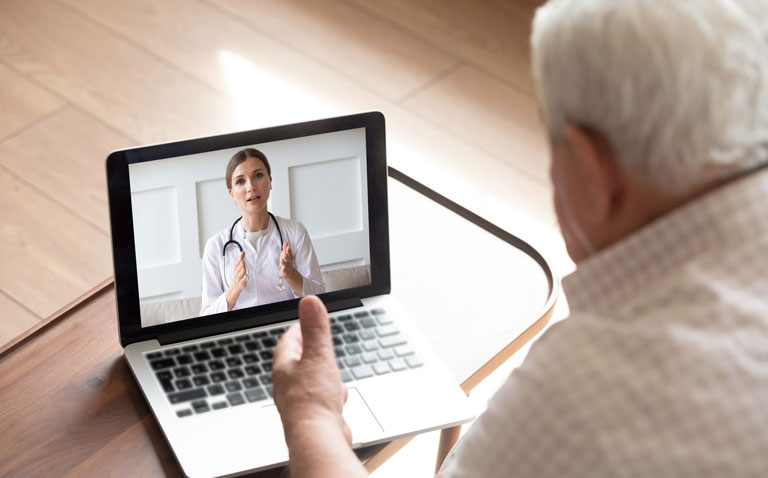The dramatic shift in the delivery of healthcare towards increased use of virtual consultations has not negatively impacted on patient satisfaction.
An unfortunate consequence of the COVID-19 pandemic was that many hospital outpatient services were literally halted overnight. As a result, health professionals increasingly turned to the use of virtual consultations. While such appointments are of value, especially for follow-ups that only involve a review of patient’s progress or a discussion about treatment, how well does tele-health work for patients who have a skin condition, for which it is normal practice to examine and palpate the skin? Tele-dermatology is not new and in a systematic review it was found that this approach was widely accepted as being valid for patient care. However, when forced upon patients due to circumstances beyond their control as seen with the COVID-19 pandemic, how does this impact on their level of satisfaction with tele-health and do they feel that it represents a suitable alternative to face-to-face visits? This was the question posed by a team from the Department of Dermatology, The George Washington School of Medicine and Health Sciences, Washington, US. The researchers emailed all patients, 18 years of age and older, who had attended at least one tele-health appointment, with a link to an online survey. The survey collected data on patient demographics, the reasons for their appointment, levels of satisfaction and any reasons for either liking or disliking this new approach.
Findings
Although 894 email invitations were sent, just over a quarter (28%) responded, of whom 67% were female and nearly half (42%) were aged 55 years and older. Interestingly, 47% of respondents had a prior face-to-face appointment cancelled due to the pandemic. The most common reasons for making an appointment included a new skin rash (11.6%), eczema (9.8%) and psoriasis (9.1%). In terms of satisfaction, the most commonly cited reasons were that it was time-efficient (81.1%), followed by avoiding the need for transport (74.2%) and being able to maintain social distancing (73.6%). Nevertheless, just over a quarter (26.8%) disliked their tele-health appointment due to the lack of physical touch whereas a smaller proportion (15.7%) reported feeling that their assessment had been inadequate. Despite this, more than half (55%) agreed that a tele-health appointment was an adequate substitute for an in-person appointment, though a quarter (25%) disagreed. In discussing their findings, the researchers noted that while tele-health had clear limitations e.g., inability to examine patients, according to their own findings, most seemed happy with this method of contact. Nevertheless, the authors recommended that dermatologists restrict tele-health appointments to either conditions that are easy to identify or for follow-up visits to review treatments.
Citation
Yeroushalmi S et al. Patient perceptions and satisfaction with tele-dermatology during the COVID-19 pandemic: a survey-based study. J Drugs Dermatol 2021;20(2):178-83










